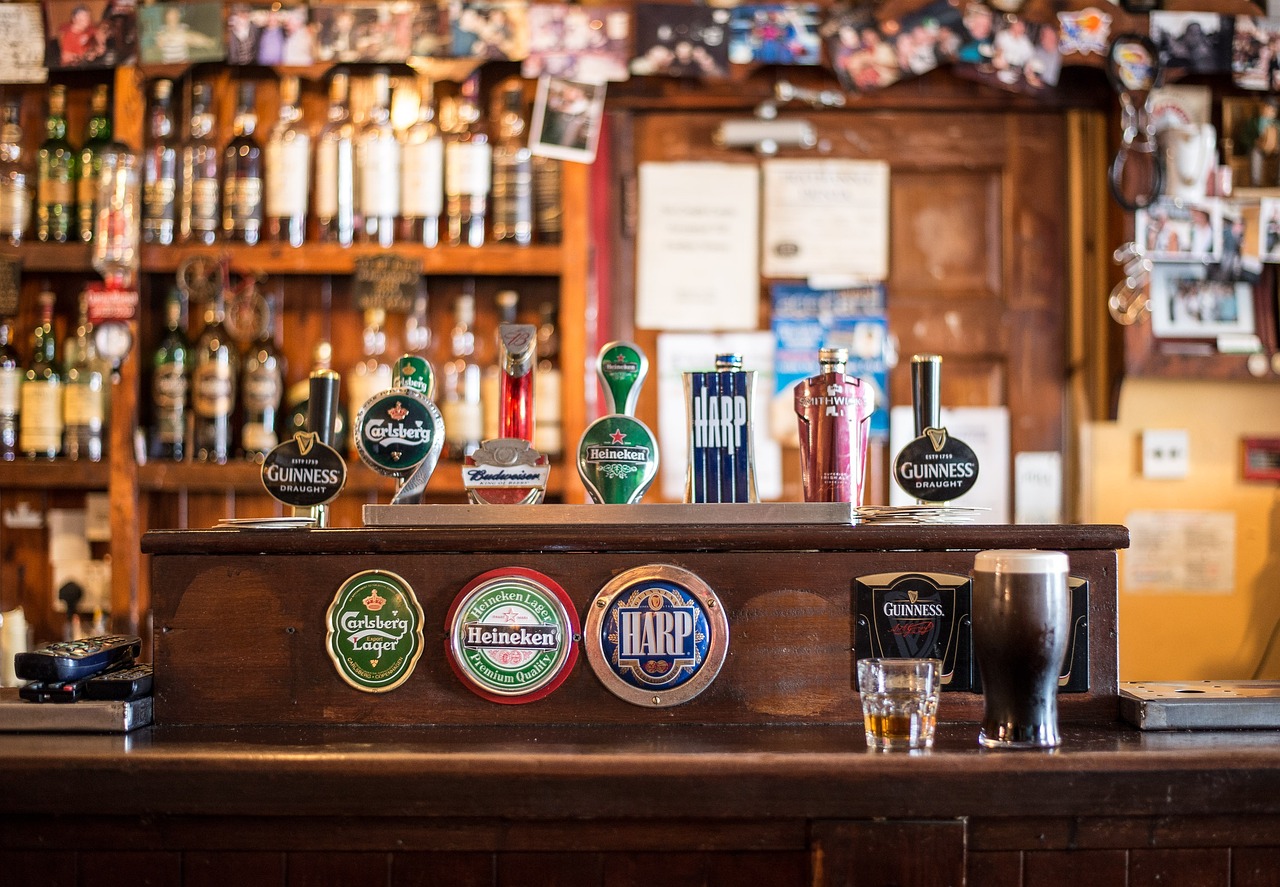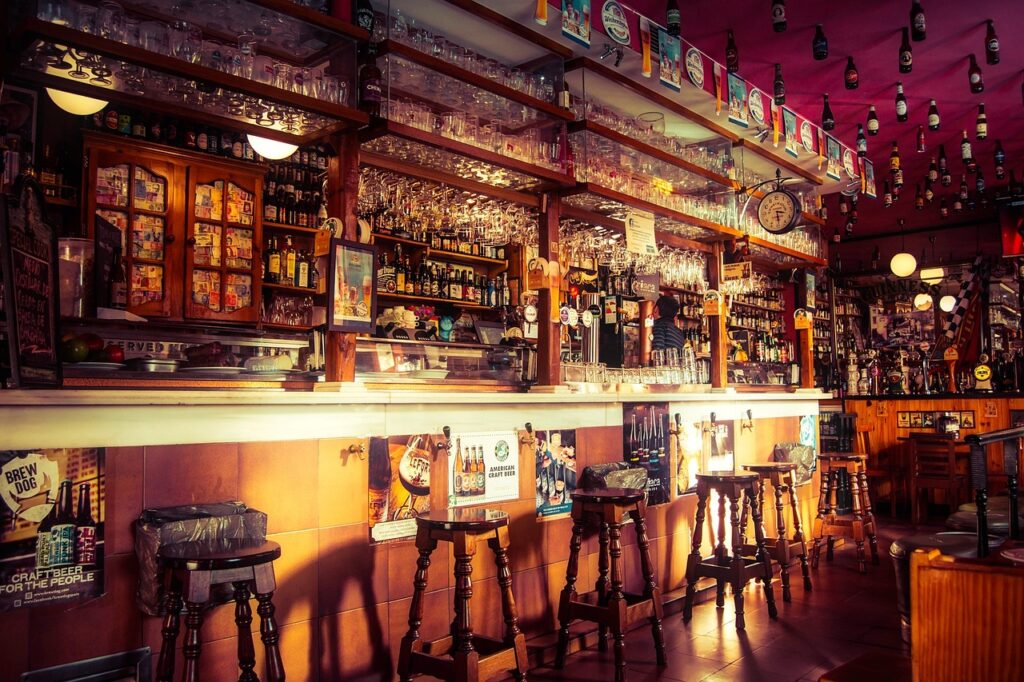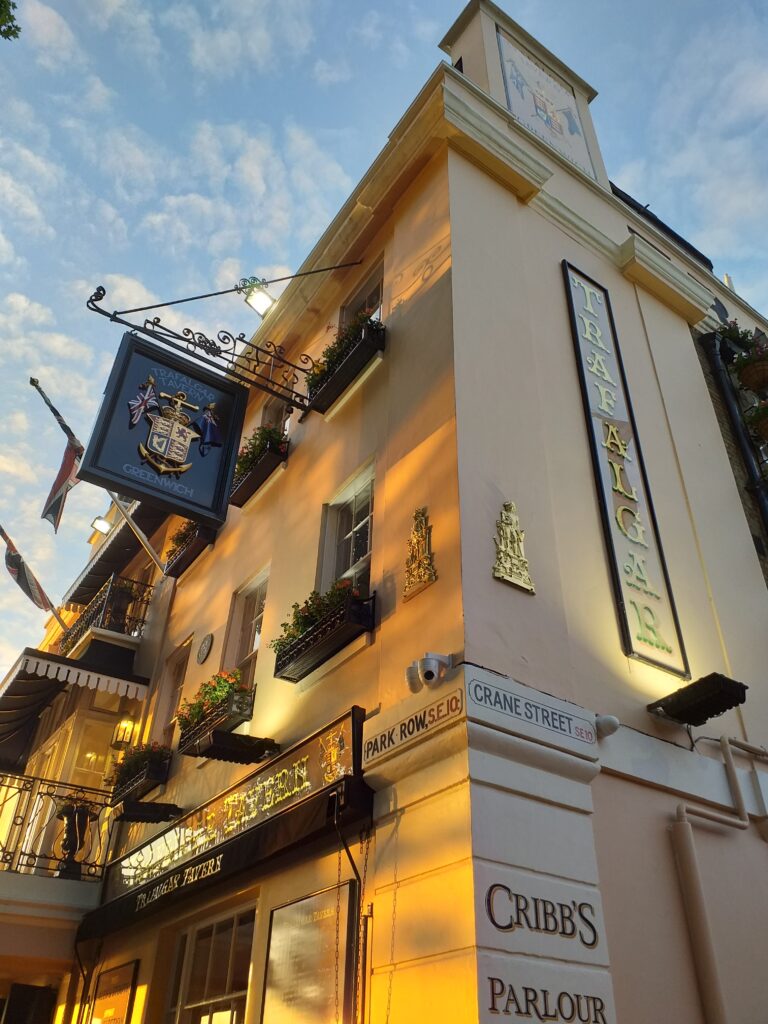Merriam Webster defines a pub as “an establishment where alcoholic beverages are sold and consumed”. This definition is true, but fairly vague. The pub is a place where you can buy a drink, maybe a little food and socialise with people from the community and beyond.
But the description above could be for any drinking establishment – so what makes a pub different to a bar? Every pub is a bar but not every bar is a pub. In this article we’ll look at pubs: their history, origins and some interesting examples of pubs from around the world.
Origins of the pub
The word pub comes from the longer “Public House”. In 17th century England there were a proliferation of illegal ale houses set up in peoples homes, hotels and other venues. These illegal enterprises were often dark and dangerous places. Violence was commonplace and the ales sold were often of very questionable quality.
A public house on the other hand was legal and the alcohol sold was regulated. From 1643, taxes were paid on the booze sold at pubs, making them a source of income for the government of the day. While illegal drinking establishments still proliferated at this time, pubs exploded in popularity.
But what actually makes a pub? I assume most of the esteemed readers of this website have been in at least one pub before. I’m sure that you would just know when you’re in a pub, as opposed to a regular bar. While there isn’t any formal definition of the public house, the Campaign for Real Ale (CAMRA) has put together a few guidelines to know whether you’re in a pub:
“The licensed premises must:
(1) be open to and welcome the general public without requiring membership or residency and without charging for admission (a);
(2) serve at least one draught beer or cider (b);
(3) allow drinking without requiring food to be consumed and have at least one indoor area not laid out for meals; and
(4) allow customers to buy drinks at a bar (c) without relying on table service.’
(a) except when entertainment is provided on limited occasions when an entry charge may apply.
(b) includes cask beer or keg beer or cider. References to ‘cider’ should be read as ‘cider and perry’.
(c) includes service from a hatch or specific service point. While this definition is intended as the general rule, there will be exceptions, such as the specialist bottled beer bar offering a wide range of canned or bottled live beer but no draught beer, or the micropub where logistically a specific service point is not possible. Such premises may be treated as pubs at the discretion of Regional Directors.”
(From the CAMRA website)
Irish pubs
While the pub originated in England, Ireland has some of the most renowned pubs in the world. An Irish pub is heavily community focussed, often has live, traditional music, hearty meals and, of course, Guinness on tap.
Interestingly, Irish style pubs have become incredibly popular around the world. Almost every large city has at least one Irish style pub. Often with a stereotypical Irish name like “Scruffy Murphy’s” or “P.J. O’Briens”. In these foreign Irish pubs, there is often not an Irish person to be seen working or drinking at the bar – perhaps a testament to how popular the format has become internationally.
While I’ve not been to Ireland yet, I’ve managed to drink in countless Irish pubs from Italy to Thailand to Sydney to England. Each one is unique and I suspect not awfully authentic compared to pubs in Ireland…but that’s OK, it’s still a fun place to eat, drink and be merry.
Australian pubs
As an Aussie, I’d be remiss not to mention Australian pubs. Like Irish pubs, these are loosely based on the British model but just feel different. First of all, you won’t get they typical closed-in, cosy atmosphere of a British pub – it’s far too hot for in Australia for that. Think more along the lines of a venue dominated by outdoor seating, large windows and very cold beer.
While I can personally attest to the fact that the quality of food in some British pubs is questionable, the food in Australian pubs is typically outstanding. Part of the reason for this is that with the outrageous excise on alcohol in Australia and declining drinking rates, pubs need a drawcard to stay profitable. This is where a great pub meal comes in.
As in the UK, pubs in Australia are often more than just a place to drink. They are a hub of community – especially in rural and regional parts of the country. In times of crisis (such as flooding and bushfires) pubs are often the hub where the community eats, meets and shares a drink.
My top 3 pubs
I’ve spent a fair bit of time in pubs over the years and have a few favourites I’d like to share.
Pub Number 3: The Hawk and Griffin (Virginia, USA)
America does bars well. From sports bars to dive bars you can always find somewhere fun to grab a drink. Unfortunately I feel like Americans don’t really do pubs that well. The pubs I’ve been to have been to in the states always feel a little…inauthentic.
The exception is the The Hawk and Griffin in Vienna, Virginia. If you’re a regular reader, you might remember this pub from my Where to Drink beer in Washington, DC guide. The Hawk and Griffin boasts an impressive tap list (including British and European beers) and great pub food. This venue is a little out of place in Virginia but very welcome.
Pub number 2: The Courthouse Hotel (Sydney, Australia)
The Courthouse Hotel in the suburb of Newtown in Sydney is iconic. It’s an old pub from around 1859. Also known as “The Courty”, this pub has serviced the diverse suburb of Newtown for generations.
I love the bustling front bar for a cold, local beer but there is also a great beer garden, pinball parlor and generous dining area. The food is outstanding – typically the menu is a mix of pub classics like chicken parmi and more unique offerings like seafood and vegan options. A must visit if you’re in Sydney.
Pub Number 1: The Trafalgar Tavern (London, United Kingdom)
The Trafalgar Tavern is another old pub, built in 1837. It grandly sits on the banks of the Thames – almost hanging over the river. The decor echoes the maritime history of the area with lots of beautiful antiques, prints and paintings in every spare centimetre of the establishment.
The fare is typical British food and honestly is a little overpriced. Regardless, I would definitely recommend the fried whitebait. There is generous outdoor seating when the weather is agreeable and it’s a great place to watch the world (and the river) go by. If you’re more organised than me, book in advance for the Sunday roast – the dining room is outstanding and the roast delicious.
The pub is a unique, welcoming venue where you can get a drink, something to eat and share a conversation with people in your community. Like many things to come out of England, it has been exported around the world where people have put their own twist on it.
Read Next: Reviewing Italy’s Supermarket Beers







